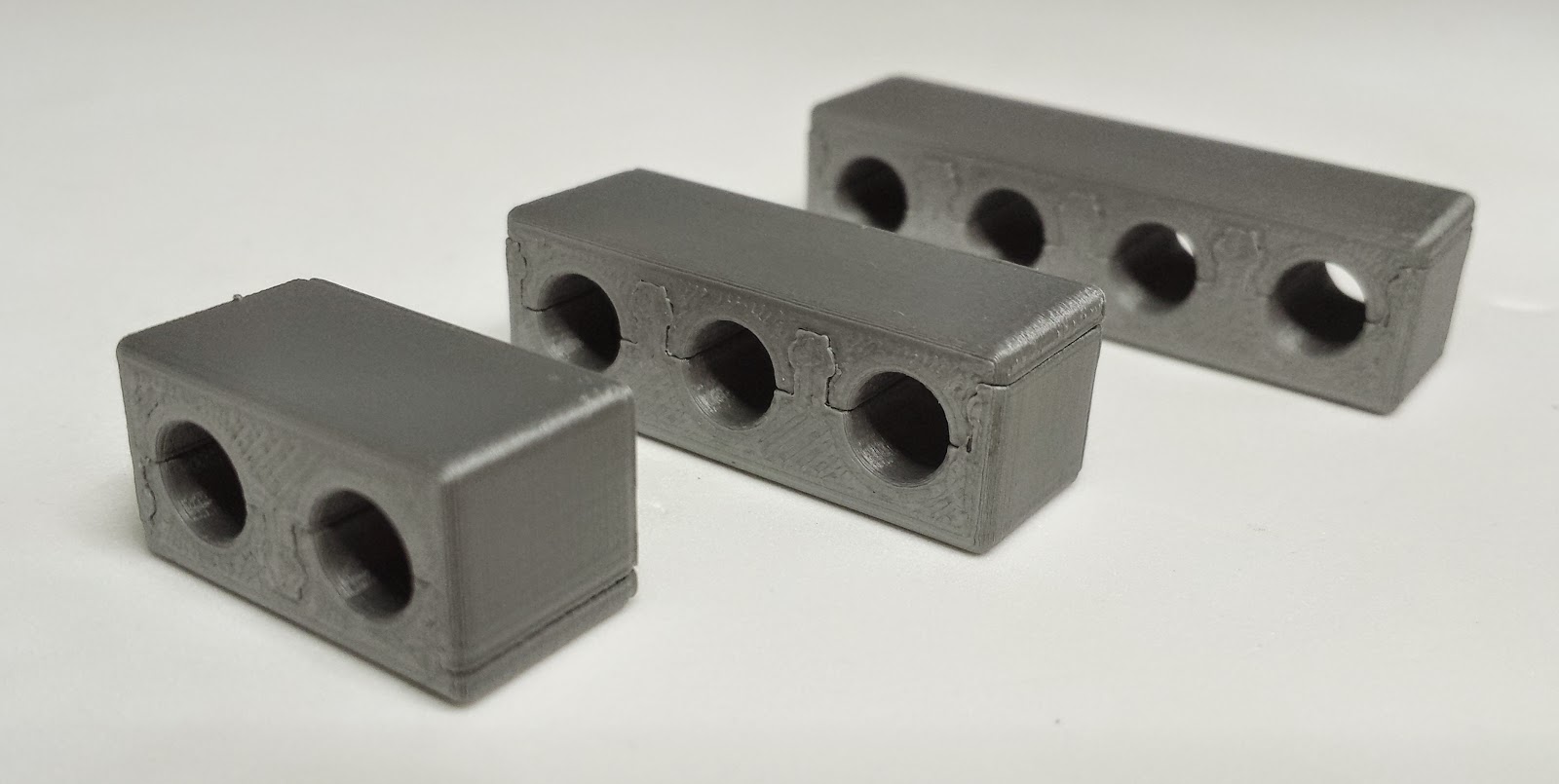 |
| proper temperature yields nice prints |
Summary: Perform this easy test to find the perfect nozzle temperature for your filament.
A few days ago Doodaddoes posted
this video about finding the best print temperature for your filament. I have been making test prints with the UM robot. The robot is a complicated print regardless of print temperature. It looks like the Doodaddoes method will result in clearer results because the prints are simpler.
You start with
this twin cylinder file. Open the .stl in Cura using the full print settings. Change the Basic settings as below and save the G-code to your SD card. View the model in layer mode so you can be sure you do not have any top or bottom layers and your shell thickness is only a single wall. Do not use the spiralize setting, you want to see the seam of the print. It will help determine the best print.
Layer Height: 0.1 mm
Shell Thickness: 0.4 mm
Bottom/Top Thickness: 0
Fill Density: 0
Print Speed: 50 mm/s
no support, no adhesion
Make sure your filament diameter, bed temperature, fan speed, and flow are correct for your filament. Then you start printing. I start with the lowest print temperature recommended by the manufacturer. Each print takes 37 minutes at those settings.
 |
| all test prints from 190°C to 230°C (L to R) in 5°C increments |
Then I print the cylinders again, each time raising the temperature 5 degrees until the print quality starts to degrade. I first tried this method with Ultimaker Ultimate Blue PLA which has a very wide recommended temperature range (190°C-260°C). I thought about printing all the way to 260°C but that would be a waste of material and risk clogging the nozzle. So I stopped once the prints started to look bad. To test the prints I first look for signs of under extrusion and check the surface finish. Then I try to pull the layers apart by putting my pointer fingers in each side, grasping with my thumbs, and pulling in line with the cylinder. Finally, I squeeze the sides of the print together to see if it cracks or the layers split.
 |
| under extrusion and weak layer bonding at 190°C |
 |
| messy seam at 225°C |
 |
| rough surface finish at 230°C |
You can see evidence of under extrusion at 190°C-200°C. The bonding between the layers was also very weak and easy to pull apart. The 205°C and 210°C prints look great with the seam being just a little cleaner on the 210°C print. Layer bonding was nice and strong and the print held up when squeezed together. At 215°C gaps started to appear in the seam and got worse at each increase in temperature after that. At 220°C the layers became more obvious and by 225°C there was significant stratification of the layers. And by 230°C the surface finish of the print became very rough. There wasn't any point in printing at any temperature beyond that. It looks like 210°C is the perfect temperature for Ultimate Blue PLA on my machine.
 |
| great layers at 200°C |
I repeated the test with
MatterHackers Pro Series green PLA. There was under extrusion at 185°C to 195°C. The prints were perfect at 200°C. Although the recommended temperature range is only 185°C to 200°C, I printed at 205°C and 210°C as well. Those prints were very good but the seam was cleaner and the surface finish was just slightly better at 200°C.
This is a terrific way to find the best print temperature for your filament. The prints are relatively quick and the differences in print quality are easy to see. I will be performing this test first with every new batch of filament I buy.







































